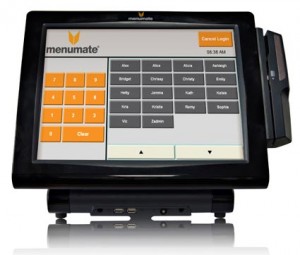increasing customer satisfaction.
Previously we investigated loyalty systems and how a point of sale system can improve the sales process. These two areas focus on increasing revenue in your hospitality business.
There will come a time where the revenue or turnover from a business has reached a certain level where you need to turn your attention to efficiencies in your business that will impact your profit.
Stock Control is an essential part of all hospitality businesses. Many industry analysts report that a business with no stock control system will be losing between 10% and 30% of their purchases to mismanagement, incorrect handling and shrinkage (a polite way of saying theft). In a business that purchases $250,000 of stock, then this variance could be anywhere from $25,000 to $75,000 of lost profit.
Stock Control and Stock Taking
Most businesses understand the term ‘stock taking’; simply put, it is a regular routine of counting the stock in your business to determine the level of stock that is being held. Too many businesses do this once or twice a year to provide a valuation for their accountant. This allows the accountant to calculate the gross profit, but does not allow the business owner to manage their stock variances, stock levels and monitor stock shrinkage.
A point of sale system should always have a dedicated Stock Control and Recipe module. Typically, this will ensure that as every item in your business is sold, it is reducing your stock levels; as stock is purchased, it is increasing your stock levels. A stock control system in your point of sale system will then provide a comprehensive stock variance report, allowing you to monitor and manage every line item in your business. Only by doing this on a regular basis will a business reduce the stock variances and increase gross profit.
Don’t be Afraid of Stock Management
Implementing a Stock Management system is not difficult, but your business needs a plan and program to follow. Many businesses think they don’t have the time to get it going or start and don’t finish. The bulk of the work to implement a system that can save tens of thousands of dollars every year is all in the first two weeks. Once implemented, it becomes a small part of a weekly or monthly routine.
Customer Satisfaction and Stock Control
A stock control system can also ensure greater customer satisfaction. A stock control system should have the ability to record minimum and maximum, or par levels that can be incorporated into the purchasing routine of a business. While there are many aspects that increase customer satisfaction, not having certain stock items is certainly one that will lead to a down turn in customer satisfaction.
The point of sale system’s stock management should ensure that there is never a case of, “Sorry, we are out of stock of that wine”, or “Sorry, we have run out of that fish, and I should tell you now that we have also had to remove the shrimp from the menu”.
Customers visit a business to choose from the full selection on the menu. To start the relationship by telling them that the business is not organised enough to provide the items they want to order means they are starting on the back foot. A well implemented stock management system would ensure these issues are extinguished from the business.
Wastage is Lost Potential Revenue
Wastage is those items left over at the end of the day, the pile of coffee grinds swept onto the floor, the drinks or meals not made correctly and returned. These are an everyday part of businesses, but in most instances left unmanaged and assumed to be just part of “What we do” and “It just is the way it is”. But what is that actually costing the business and once monitored, can it be improved?
There are many real life accounts that demonstrate the importance of knowing the cost of your wastage. One business that implemented the recording of wastage before they implemented further stock control reported some worrying trends. This business sells a small range of bakery goods. They purchased their goods from the same supplier every day, and every day they had a set order for their bakery goods. The levels were historical and had not been adjusted for two years. Business was consistent over those years, so there was no real need to increase or decrease the order. Every day it just came in and was signed off.
A wastage monitoring system was implemented. At the end of each day, the stock left over was recorded as wastage through the Point of Sale system before it was thrown out. What was a 5 minute job at the end of each day showed the owner that every week they were writing off over $200 of bakery goods, every week! Over the previous two years this showed a cost to the business of over $20,000 of profit. It also meant over $50,000 of lost potential revenue, as those goods were thrown out.
Once the severity of the issue was recorded, a more detailed stock management system using minimum and maximum levels was implemented, ensuring that the purchasing of stock matched the buying history of the previous 6 weeks and reducing the weekly wastage to below $30 per week. This saved the business over $8,000 per year. Not a bad return for a few minutes’ work each day.
For more information on stock control or for the previous articles on loyalty and productivity, feel free to contact Menumate in Australia on 1300 886 942 or New Zealand on 0800 657 300 or via email on sales@menumate.com. Andrew McClurg is the CEO of Menumate Limited and author of 12 Steps to Total Stock Control and can also be contacted on andrewm@menumate.com
For more info or previous articles, contact Menumate in Australia on p.1300 886 942 or New Zealand on p.0800 657300 or e. sales@menumate.com



















